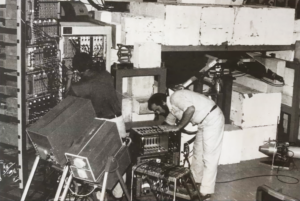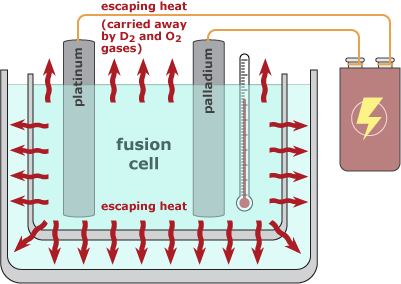In addition to trying to replicate Pons and Fleischmann’s experiment — attempts which had been thwarted by lack of information — scientists also tried to verify the work in other ways, scrutinizing the cold fusion paper for potential sources of error. Many of the problems they noticed would likely have been caught in a thorough peer review, and some mistakes were surprisingly simple. For example, scientists noted that Pons and Fleischmann hadn’t stirred the heavy water inside their fusion cells. Just as not stirring a pot of soup on the stove is likely to leave some parts cold and others burnt, not stirring the water in a fusion cell leads to uneven heat distribution and inaccurate temperature measurements.
Others continued to try to replicate the findings by trying out many different experimental combinations, hoping to hit on the one used by Pons and Fleischmann. Initial results were mixed. While most research groups reported seeing no evidence for fusion, a few groups did claim to observe excess heat and/or neutrons coming from their fusion cells. However these groups conflicted with each other on the conditions needed for fusion. For example, some found that months were needed for the nuclear reactions to begin, others noted results in just a few hours. And often, these groups couldn’t even replicate their own results.

How was it possible for very similar experiments to produce such varied results? Some of the results were simply mistakes. Several of the confirmations of Pons and Fleischmann’s results had to be retracted due to errors — for example, forgetting to connect a key wire in the experimental set up. Other discrepancies were due to differences in data analysis. Scientists collect “raw” data — which must be analyzed and interpreted before it can say anything meaningful about the test. For example, many of the cold fusion scientists, including Pons and Fleischmann, tried to gauge whether fusion was happening by measuring the heat produced by the cell. This sounds like it would be simple — just measure the temperature of the cell — but, in fact, it’s not. The cell exchanges heat with its surroundings, and some heat is carried away by escaping gasses. The impact of these factors must be carefully estimated and taken into account in the data analysis. If two groups handle these adjustments differently in their analyses, they might come to different conclusions about the experimental results.

Scientists can also make different interpretations of the same analyzed data. One group was able to show that Pons and Fleischmann had misinterpreted the data from their neutron search. At first glance, the data seemed to show clear evidence of neutrons — but neutrons, if they are really there, would lead to a series of reactions with the water surrounding the cell — and Pons and Fleischmann’s data was missing any evidence of the last link in that chain of reactions. Further investigation revealed problems with the equipment used to gather the neutron data. Thus, it seems that Pons and Fleischmann’s data would have been more reasonably interpreted as evidence of equipment error, not as evidence in favor of the cold fusion hypothesis.
To learn more about data analysis and interpretation visit Digging into data.
